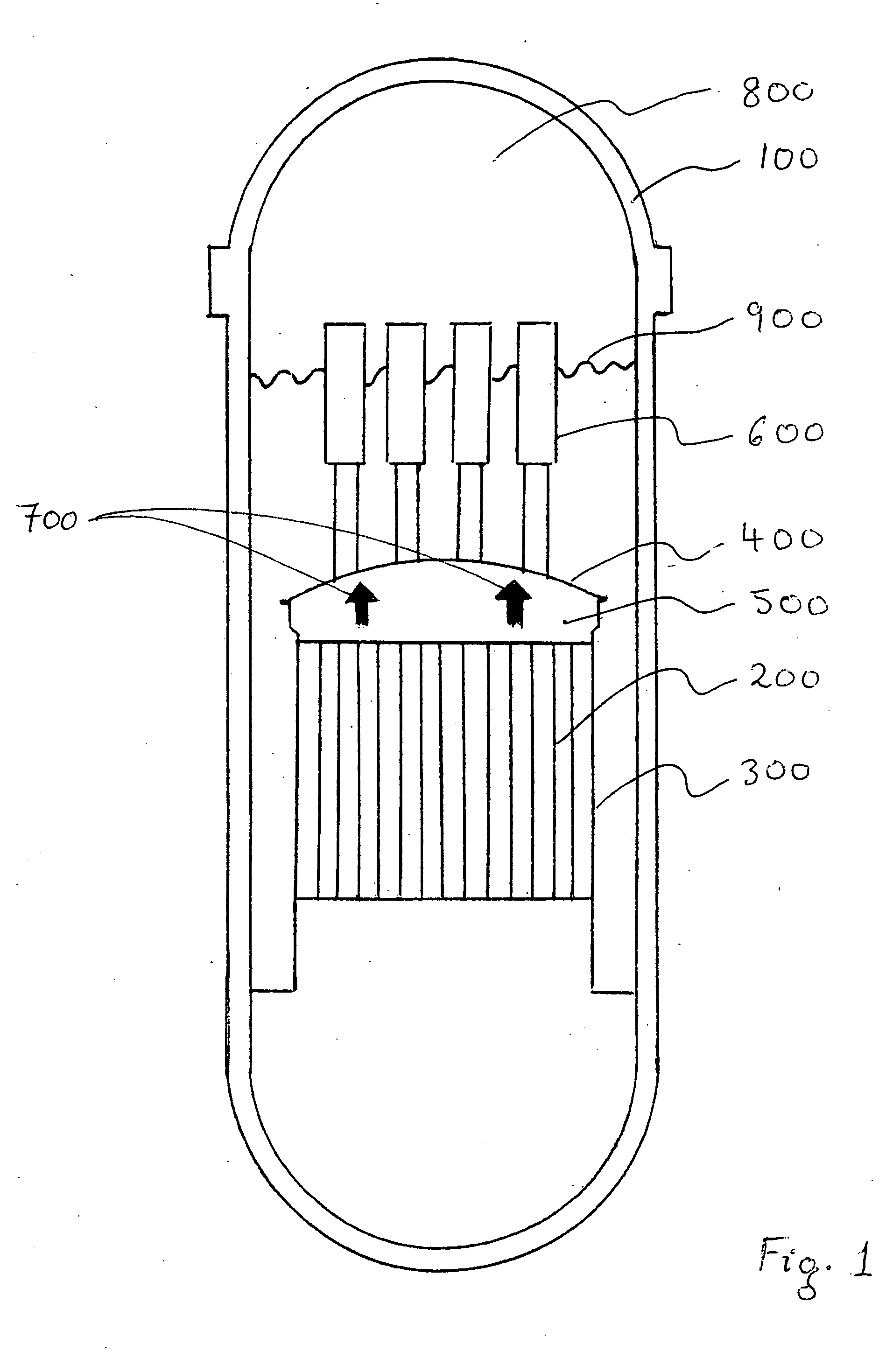Method and device to stabilize boiling water reactors against regional mode oscillations
a technology of boiling water reactor and regional mode, which is applied in the direction of nuclear engineering problems, nuclear elements, greenhouse gas reduction, etc., can solve the problems of reducing the water density, adversely affecting the moderating function, and reducing the amount of water available for the cooling function, so as to avoid any negative impact on normal operation and minimize resistance
- Summary
- Abstract
- Description
- Claims
- Application Information
AI Technical Summary
Benefits of technology
Problems solved by technology
Method used
Image
Examples
Embodiment Construction
[0033] The basic principle of how the new flow partition device works is explained by considering a series of situations where a regional oscillation takes place in a BWR core without intervention, then with a device dividing the flow in the upper plenum in two, and lastly with a device dividing the upper plenum in three or more flow paths.
[0034]FIG. 1 depicts a sketch of an elevation section of a BWR vessel (100) inside which the nuclear core (200) is surrounded by the core shroud (300). The shroud head (400) is the dome-like structure resting on top of the core shroud creating the upper plenum (500) inside which the steam-water mixture exiting the core fuel assemblies is mixed and flows upward into the steam separator assembly (600). The normal flow direction of the steam-water mixture discharged from the core into the upper plenum is shown in FIG. 1 by the vertical upward arrows (700) which denote the flow of the steam-water mixture exiting the fuel assemblies and gathering in t...
PUM
 Login to View More
Login to View More Abstract
Description
Claims
Application Information
 Login to View More
Login to View More - R&D
- Intellectual Property
- Life Sciences
- Materials
- Tech Scout
- Unparalleled Data Quality
- Higher Quality Content
- 60% Fewer Hallucinations
Browse by: Latest US Patents, China's latest patents, Technical Efficacy Thesaurus, Application Domain, Technology Topic, Popular Technical Reports.
© 2025 PatSnap. All rights reserved.Legal|Privacy policy|Modern Slavery Act Transparency Statement|Sitemap|About US| Contact US: help@patsnap.com



